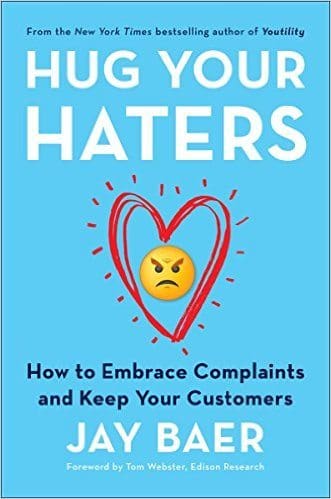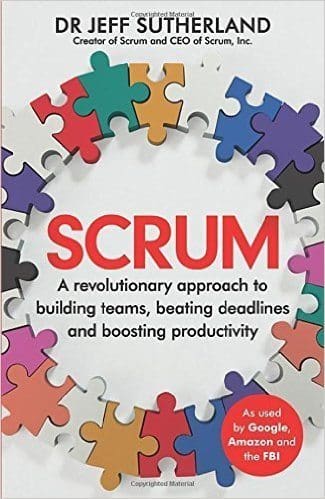How To Add Value To Your Customers In The Experience Economy
We are in the era of the ‘fourth economy’. Joe Pine calls this the experience economy and perfectly illustrates this with the humble coffee bean. This example is even more apt given the incredible rise of coffee shops surrounding us. Many businesses and services are already sustaining growth and clarity by delivering notable customer experiences. Starting the process is deceptively simple, the application, though, takes dedication.
The coffee bean is a true commodity. Companies that harvest, and trade coffee will receive approximately 75 cents per pound, or roughly 1 or two cents a cup. When these are roasted, ground and packaged by manufacturers the price to consumer’s jumps to between 5 and 25 cents a cup. Percolate or brew these grinds in any standard diner, petrol station or run of the mill restaurant now sells for 50 cents to a dollar per cup.

What happens when you add Experience to a Commodity, Good or Service?
Depending on your business in this supply chain you are either offering a commodity, good, or service, each with its own value offering. The interesting thing here is if you add a little ambience and some theatre you find customers gladly handing over $3 to $5 per cup. [tweet_dis inject=”#marketing”]This twofold increase over the original commodity was easily achieved by adding a distinctive experience.[/tweet_dis]
“This twofold increase over the original commodity was simply achieved by adding a distinctive experience.”
A more extreme example of the experience economy with coffee is Caffé Florian in St. Mark’s Square, Venice. You may argue that this is more about real estate or location. However, that is the experience. Where else can you sit with the rich and famous and watch as life passes by in one of the world’s iconic locations. The price of admission here is more than $15 per cup of coffee!




You can argue that goods and services all come with experiences, good or bad. We are all affected, one way or another, through every interaction. Generally, these experiences fall within three categories of indifference, hater or fan. The difference is when you buy an experience, you pay to enjoy a series of memorable events that the company stages. Engagement is experienced in a deeply personal way. By doing this, we create an experience as the fourth economic offering. Staging is the apt metaphor Joe uses to describe our role as ‘actors’ and our business as a stage on which we perform.
The difference is when you buy an experience, you pay to enjoy a series of memorable events that the company stages. [tweet_box design=”default” float=”none” inject=”#marketing”]The difference is when you buy an experience, you pay to enjoy a series of memorable events that the company stages.[/tweet_box] The visionary founder of this ‘experience economy’ was Walt Disney. With numerous innovations in layering image and sound, he gave us moving experiences through his unique craft of story telling. The peek experience of all his life’s work arrived in 1955 with the opening of his immersive cartoon world – Disneyland, which still delights and leads the way even today. The tag-line, by the way, sums up this staged experience – ‘The happiest place in the world’
So what does it take to move into the experience economy?
We are still operating in a saturated, traditional marketing and discount era. However, successful entrepreneurs are providing numerous examples as experience innovators prospering in this new economy. To shift our traditional mindsets we need to do is study and analyse these examples. It helps us focus. From here one of the best things we can do is, ask ourselves; What is the one thing in our business that we can eliminate that would increase or add greater value to our customer?
Current mass production mentality is not giving customers exactly what they want. It also contributes to discount cycles and wastage in unsold items. In other words, the customer has to sacrifice and has been prepared to live with that. In the experience economy, this can be removed. [tweet_dis]A good brand experience empowers the customer to adjust and customize their order.[/tweet_dis] To have a custom experience that is more intimate. Seek out and create the experiences your customers are actually looking for. What can we remove from our supply or service that increases the value created for our customers? Look at what experiences we can stage as memorable event’s guests would be willing to pay for.
Imagine car companies that could do this. Rather than producing 100 different models with thousands of options, why not create an experience. A salon where a customer could shape, adjust and interact with their order then reviews and even participates in the build. Tesla for one has begun to shake out this old market thinking, and already we see others moving in the same direction. As an example imagine waking up to this tweet from Elon Musk: did your car just get faster?
https://twitter.com/elonmusk/status/560898568748531712
Secondly, we need to look at the way we engage staff. Employees are on your stage and need to act in a way that engages your customers. Companies like Adobe are streamlining their services and engaging staff in training and listening encounters with customers, that then flows into better product updates and performance that most closely deliver what a customer actually needs. The company personality also begins to shine as closer connections between staff, and customer grows. Even this is old thinking! [tweet_dis]Walt Disney has ‘guests‘ not customers or clients and ‘cast members‘ not employees?[/tweet_dis]
Finally, we need to charge for time, an admission fee. Disneyland was the first experience economy to charge an admission to “the happiest place in the world.” This entry drives the demand for all the additional goods and services in the Disney franchise.
Frameworks for charging include: entry fees, per event fees, initiation fees, access fees, and membership fees. Each of these can be used to find creative solutions applicable in your situation. An example of this is Netflix, which doesn’t charge the traditional per movie fee but rather a monthly access fee which transformed the viewing experience. Companies should also charge for the results from that time. If this was adopted to imagine the impact. What could healthcare look like if you were only charged for outcomes or ongoing wellness? Or Lawyers billing on results, not time?
There are so many great examples to learn and be inspired from, like Apple, The Geek Squad and Walt Disney. Sadly, some marketers are confusing the experience economy by attempting to promote products. While this may work by engaging a few customers and even change the perception of how that product can be used, it will not build lasting or trans formative relationships.
“This is the story-doing versus storytelling,” said Andrew Shripka, the associate director of brand marketing. “We could have put a great recipe on the box. However, this is so much more powerful.” In the experience economy, it’s no longer enough for brands to shill products in magazines or on TV. Customers want to interact. Think Ralph Lauren’s Polo Bar, a clubby, wood-paneled restaurant on Fifth Avenue, or the Armani hotels in Milan and Dubai that envelop the clientele in an elegant world of creamy beige silk. Even so, offering experiences can be a trickier proposition for commercial food brands, which often are vilified for hawking too much sugar, fat and salt.
“Gone are the days of one-way communication,” said Mr. McGuinness. “Customers want to talk and have an exchange.”
While there is merit in this quote, be careful here not go for the easy option or the low-hanging fruit. Go further and actually transform the core business. Now that would be an experience.
https://twitter.com/WSJ/status/747860648785219584
Over to You
While many businesses continue to promote and struggle in the commodities, goods and services’ sector, [tweet_dis]the lasting value and wealth lie in building in the experience economy.[/tweet_dis] By questioning the value we bring to our customers and discovering how we can provide the best experiences to solve their problems. We develop our unique brands and move away from packaged, hourly, discount pricing. There are many examples of businesses prospering in the experience economy, applying this to your business can start out easily enough, building your experience brand, will, however, require more effort.
What examples have inspired you? Are you interested in discovering ways to move into the experience economy?
Reading for Inspiration
- Blog Title Generator As A Lead Capture Generator - September 18, 2016
- Get Your Google Local Business Reviews Generator - August 2, 2016
- You Can Sell Anything If You Can Sell Fresh Air - July 22, 2016

Peter Wennersten
Passionate about family, friends and flying. Founder @iconinnovations building brand experiences for local business, small and large, to thrive in the social economy through Creative, Design, Digital, Marketing and Social.


